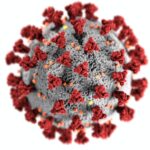You can follow a few practical tips to help manage your arthritis symptoms. These tips include relaxation techniques, Glucosamine and SAMe supplements, a good night’s sleep, and exercise.
Contents
Relaxation techniques
When managing arthritis symptoms, consider using relaxation techniques. The most effective types of plans involve practice and repetition.
Some examples of relaxation techniques include progressive muscle relaxation, guided imagery, autogenic training, and meditation. These can be taught by a professional or used as self-help tools.
Relaxation techniques are designed to improve mood and relieve stress. They may also help reduce pain and headaches.
Several studies have investigated the effects of various relaxation techniques on the pain and health of people with chronic conditions. However, the research has been inconsistent.
For example, the benefits of progressive muscle relaxation were found only in the context of a longer-term study. In contrast, guided imagery and meditation were less effective than a placebo.
The best way to learn about these techniques is to talk with a healthcare professional. If you are interested in learning more, the arthritis support groups in my area offer free online arthritis self-management learning resources.
Despite its effectiveness, there are concerns about using relaxation techniques alone. One problem is that they might exacerbate pain symptoms in some people.
Exercise
Exercise is a great way to reduce the symptoms of arthritis. It can also help you maintain a healthy weight, alleviating pressure on painful joints. But it is important to remember that you should only perform an exercise you are comfortable with.
Some exercises, such as yoga, can improve the flexibility of your joints. Another type, called body-awareness exercises, can improve posture and reduce the risk of falling.
Other exercise benefits include a healthy weight and lower stress levels. However, it is best to consult with a healthcare provider before you begin an exercise program. They can recommend a plan that is suited to your specific needs.
In addition, the pain or discomfort you may feel when you exercise should be considered. If you have swollen or red joints, you may need more rest than usual during your workouts.
The ‘two-hour pain rule’ is a good indicator of how intense your workouts should be. This means that if you have mild pain or stiffness, you should stop and rest for a while before you start again.
Glucosamine and SAMe
Glucosamine and SAMe are two supplements used in managing arthritis symptoms. Both are natural compounds found in the body. They can be purchased in powder or pill form. However, both may cause a few side effects. These include upset stomach and skin rashes. For these reasons, discussing their use with your healthcare provider is best.
Glucosamine is a naturally occurring amino-monosaccharide that is found in the body. It is responsible for making chemicals that build cartilage and tendons. There are several oral glucosamine preparations, including glucosamine sulfate and N-acetyl glucosamine. Some formulations of glucosamine combine other ingredients, such as manganese and MSM.
Glucosamine supplements may help treat osteoarthritis (OA) of the knee. However, their efficacy is limited to severe OA. In addition, there needs to be more evidence about their effectiveness in other joints.
To evaluate the efficacy of glucosamine, extensive studies are needed. One such study was the Glucosamine/Chondroitin Arthritis Intervention Trial. This trial was a double-blind, randomized, multicenter study sponsored by the National Institutes of Health. Glucosamine significantly reduced pain in patients with moderate-to-severe OA but not in patients with severe OA.
Losing Weight
If you have arthritis, losing weight may be a great way to help your joints feel better. Weight gain puts extra stress on your joints and can increase your pain. This is especially true for obese patients. Getting rid of excess body weight can ease the pain, improve your function, and even prevent osteoarthritis.
Excess weight puts pressure on your knees and hips. The extra force can cause various problems, including inflammation, stiffness, and decreased mobility.
An excellent way to start working on weight loss is to set small goals that you can achieve. You can reward yourself along the way.
Exercise can be a valuable part of your weight loss plan. Regular exercise helps increase your muscle mass, which can reduce the load placed on painful joints. It also gives you a boost of energy.
Eating healthy foods can also help you manage your weight. Try to eat various fruits and vegetables and choose lean proteins and whole grains. Avoid processed foods, which often contain high levels of fat and sugar. Drink water regularly to help regulate your appetite.
Getting a Good Night’s Sleep
Getting a good night’s sleep can help you manage arthritis symptoms and prevent them from affecting your daily life. But many people with arthritis have difficulty getting a good night’s rest. If you’re having trouble sleeping, you should consult your doctor or a healthcare provider.
Poor quality sleep has been linked to an increase in fatigue and depression. It may also affect the body’s ability to fight off inflammation.
Despite the links between poor sleep and pain, doctors are still not entirely sure why this happens. One theory is that inflammatory chemicals accumulate in the joint fluid when lying down. In turn, these chemicals stiffen your joints and interfere with sleep. Another possible explanation is that a lack of sleep can make the pain centers of your brain more active.
You can improve your chances of achieving high-quality sleep by establishing a sleep routine. A regular bedtime and waking up at the exact times each day will help your body maintain its internal clock.




